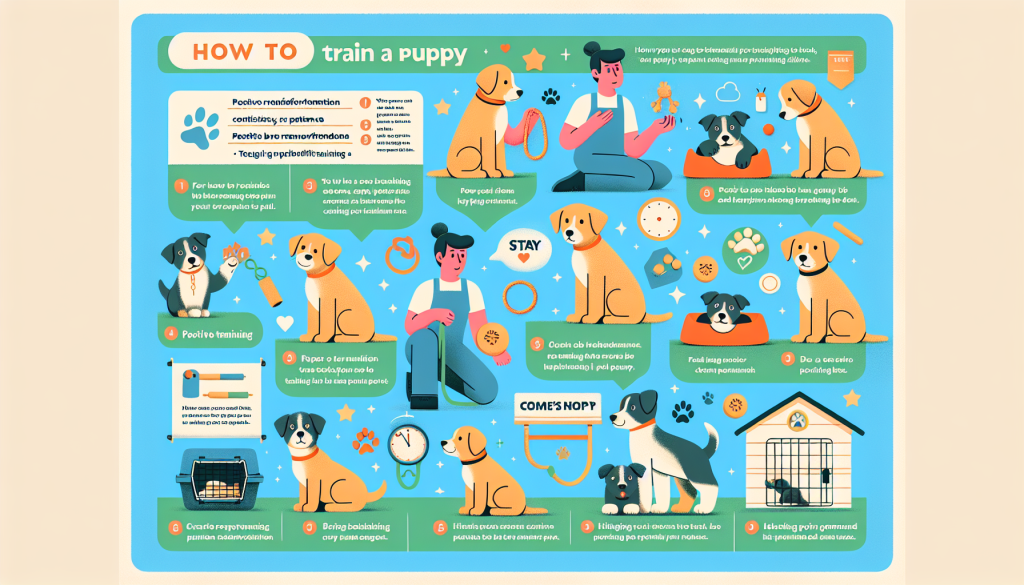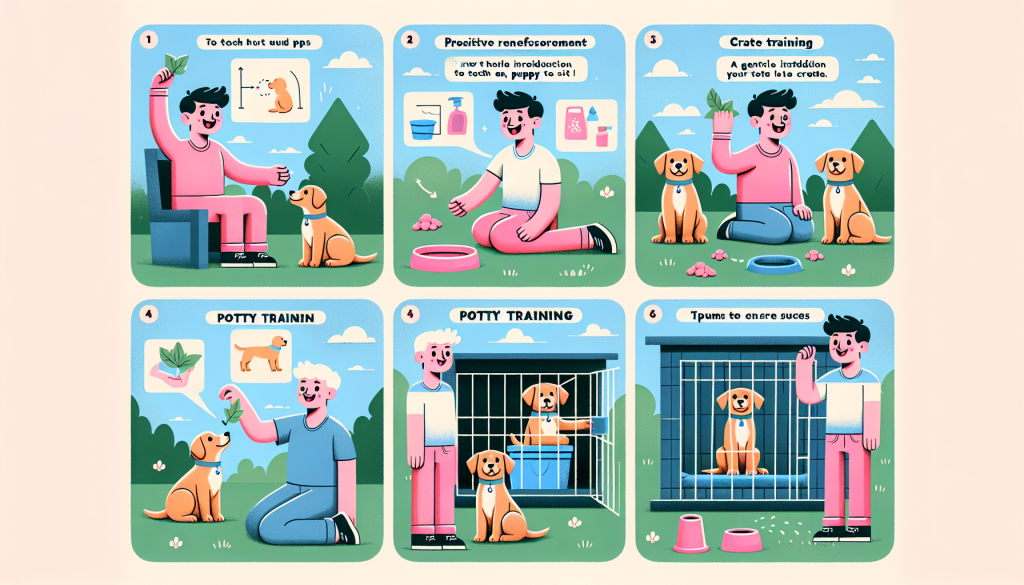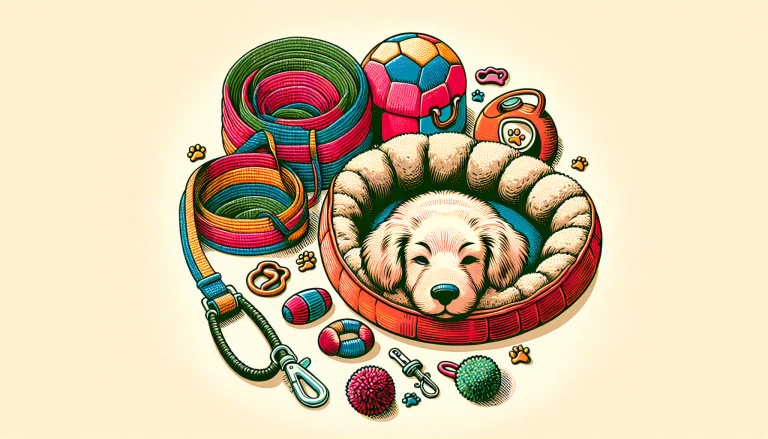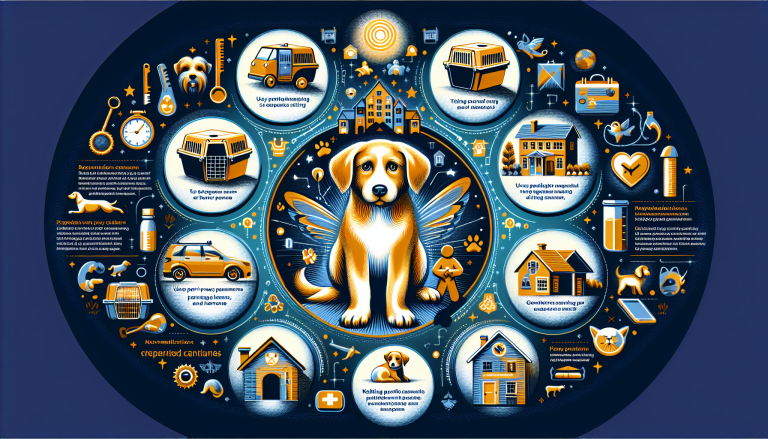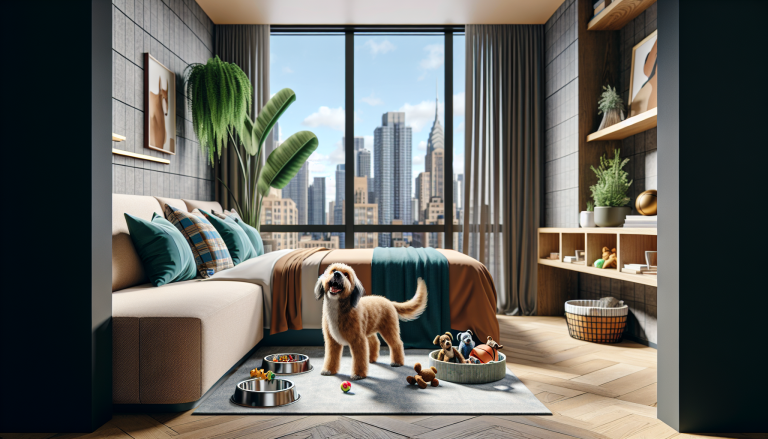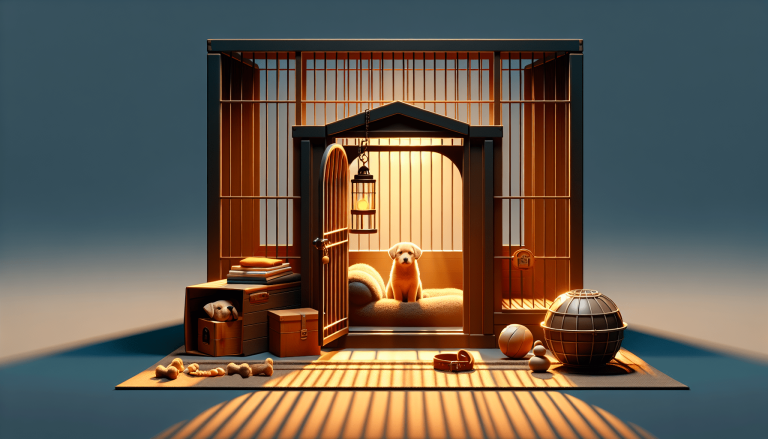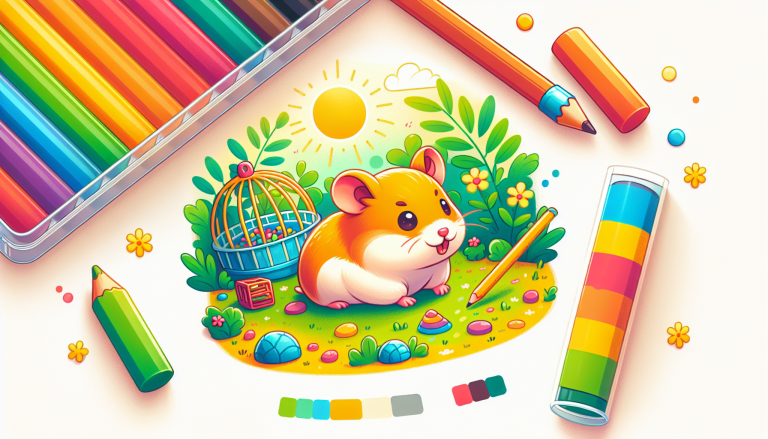If you’re a proud new puppy owner, you may be wondering how to effectively train your furry friend. Training a puppy is an exciting and rewarding process that requires patience, consistency, and positive reinforcement. In this article, you’ll discover practical tips and techniques to help you navigate the journey of puppy training, from potty training to basic obedience commands. With these helpful insights, you’ll be well on your way to building a strong bond and well-behaved companion with your adorable new addition to the family.
Table of Contents
ToggleChoosing the Right Puppy
When it comes to choosing the right puppy, it’s essential to do your research on different breeds. Each breed has its own unique traits, and it’s important to find one that aligns with your lifestyle and preferences. Are you an active person who enjoys spending time outdoors? Then you might lean towards a more energetic and playful breed. If you prefer a quieter and more laid-back lifestyle, a calmer breed might be a better fit. By understanding the characteristics of different breeds, you can find a puppy that will be a perfect match for your family.
Alongside considering the breed, it’s crucial to evaluate the puppy’s temperament. Just like humans, each puppy has its own personality. Some may be more outgoing and social, while others may be shy or reserved. It’s important to spend time with the puppy you are considering bringing home to see if their temperament aligns with your expectations. This will help ensure a harmonious relationship between you and your new furry friend.
Lastly, whether you choose to adopt from a shelter or go through a breeder, it’s essential to find a reputable source. Look for breeders who are knowledgeable, passionate, and caring. A reputable breeder or shelter will ensure that the puppy has received proper medical care, vaccinations, and socialization. They will also be transparent about the puppy’s background and offer ongoing support and guidance.
Preparing for Puppy Training
Before delving into puppy training, it’s essential to have the necessary supplies ready. Some key items include a collar or harness, leash, food and water bowls, puppy food, chew toys, and a crate. These supplies will help set you and your puppy up for success during the training process.
Creating a designated living area for your puppy is also crucial. This means setting up a safe space, such as a crate or a puppy-proofed room, where the puppy can stay when you are unable to supervise them. This designated area helps prevent accidents and provides the puppy with a sense of security.
Another important aspect of preparing for puppy training is establishing a consistent schedule. Puppies thrive on routine, so having a set schedule for feeding, playtime, training, and rest will help them understand what is expected of them. Consistency creates a structured environment for your puppy to learn and grow.
To ensure your puppy’s safety, it’s important to create a puppy-proof environment. This means removing any potential hazards, such as toxic plants, electrical cords, or small objects that your puppy may chew on. By providing a safe and secure environment, you can prevent accidents and keep your puppy out of harm’s way.
Establishing a Bond with Your Puppy
Building a strong bond with your puppy is crucial for a successful training journey. Spending quality time together is one of the best ways to foster this bond. Engage in activities such as playing, walking, and cuddling. By investing time and attention into your puppy, you are laying the foundation for a trusting and loving relationship.
Positive reinforcement is a key aspect of training a puppy. Rewarding your puppy for desired behaviors, such as following commands or using the designated potty area, reinforces those behaviors and encourages them to continue behaving in that manner. Treats, verbal praise, and gentle petting are all excellent ways to positively reinforce good behavior.
Using your puppy’s name frequently is another great way to establish a bond. When you call your puppy by their name, you are showing them that they are an important part of your life. This helps strengthen the connection between you and your puppy and makes training more effective.
Establishing trust and respect is vital in any relationship, including the one with your puppy. Treat your puppy with kindness and patience, and avoid using harsh or punitive training methods. By creating an environment based on trust and respect, you are nurturing a bond that will last a lifetime.
Basic Obedience Training
Teaching your puppy basic obedience commands is an important step in their training journey. The commands of “Sit,” “Stay,” “Come,” and “Lie Down” are foundational and will provide a solid basis for further training.
The “Sit” command is one of the first commands you should teach your puppy. Start by holding a small treat close to their nose and then move it up and back, encouraging them to follow it with their eyes and nose. As their head goes up, their bottom will naturally lower into a sitting position. Once they are sitting, verbally praise them and give them the treat.
The “Stay” command is crucial for keeping your puppy safe in various situations. Begin by having your puppy sit, then with an open hand, say “Stay” while taking a step backward. If they remain in place, return to them and offer praise and a treat. Gradually increase the distance and duration of the “Stay” command.
The “Come” command is essential for your puppy’s safety and to ensure they stay close to you. Begin by squatting down and opening your arms, calling your puppy’s name in an inviting and enthusiastic tone. As they come towards you, provide lots of verbal praise and reward them with a treat. Practice this command in a safe and enclosed area before moving to more open spaces.
Teaching your puppy to “Lie Down” is useful for calming them down and getting them to settle. Start by having your puppy in a sitting position, then hold a treat in your closed hand and lower it to the ground. As your puppy follows the treat with their nose, their body will naturally lower into a lying position. Once they are lying down, praise them and give them the treat.
Housebreaking Your Puppy
Housebreaking, or potty training, is a crucial aspect of puppy training. Understanding your puppy’s elimination needs is key to successful housebreaking. Puppies typically need to eliminate shortly after eating, waking up from a nap, or engaging in vigorous play. By paying attention to your puppy’s behavior, you can anticipate when they need to go outside.
Establishing a consistent routine is essential for housebreaking. Take your puppy outside to the designated potty area at regular intervals, such as after meals or every few hours. Use a specific command, such as “Go potty” or “Do your business,” to associate the act of elimination with the command.
Crate training can be a valuable tool for housebreaking. Puppies have a natural instinct to keep their living area clean, so using a crate helps them develop bladder and bowel control. Ensure the crate is appropriately sized, providing enough space for your puppy to stand, turn around, and lie down comfortably. Take your puppy outside immediately after they are let out of the crate to reinforce the potty training routine.
Rewarding good behavior and correcting accidents is vital during the housebreaking process. When your puppy eliminates in the designated area, praise them enthusiastically and offer a high-value reward. Conversely, if accidents occur indoors, never scold or punish your puppy. Instead, clean up the mess thoroughly and take note of any patterns or signs that may indicate your puppy needs additional potty training.
Socializing Your Puppy
Socializing your puppy is crucial for their overall well-being and future interactions with people and animals. Exposing your puppy to different environments helps them become comfortable in various situations and reduces the risk of fear and anxiety.
Introduce your puppy to various people and animals in a controlled and positive manner. Encourage them to interact with friendly and well-behaved dogs to learn appropriate social cues. Expose them to different ages, genders, and ethnicities of people to promote a broad range of positive experiences.
Providing positive social experiences is key during the socialization process. Organize playdates with other puppies or arrange supervised interactions with calm and friendly adult dogs. Reward your puppy for calm and confident behavior when exposed to new experiences, sounds, and sights.
If your puppy shows signs of fear or anxiety, address these issues promptly. Consult with a professional trainer or behaviorist to develop a customized plan to help your puppy overcome their fears and build confidence. Never force your puppy into uncomfortable situations, as this can exacerbate their anxiety.
Teaching Basic Commands
In addition to the basic obedience commands mentioned earlier, there are other essential commands that can further enhance your puppy’s training and safety.
The “Leave it” command teaches your puppy to move away from an object or item they are showing interest in. Start by holding a treat in a closed hand and allowing your puppy to sniff and paw at it. Once they lose interest, say “Leave it” and offer them a treat from your other hand. Gradually, increase the difficulty by placing the treat on the ground or using objects with different scents.
The “Drop It” command is useful for when your puppy picks up something they shouldn’t have, such as a shoe or a piece of furniture. Begin by offering your puppy a toy and once they take it into their mouth, say “Drop It” and show them a treat. Once they drop the toy, praise them and give them the treat. Consistently practicing this command will help your puppy understand that dropping items on command is rewarding.
Teaching your puppy to “Wait” is important for their safety during everyday situations. Start by having your puppy in a sit or down position, then open a door or gate a small distance in front of them. Say “Wait” in a firm but calm voice and take a step or two back. If your puppy remains in the sit or down position, return to them and offer praise and a treat. Gradually increase the duration and distance of the “Wait” command.
The “Off” command is crucial for teaching your puppy not to jump on people or furniture. Begin by crossi

